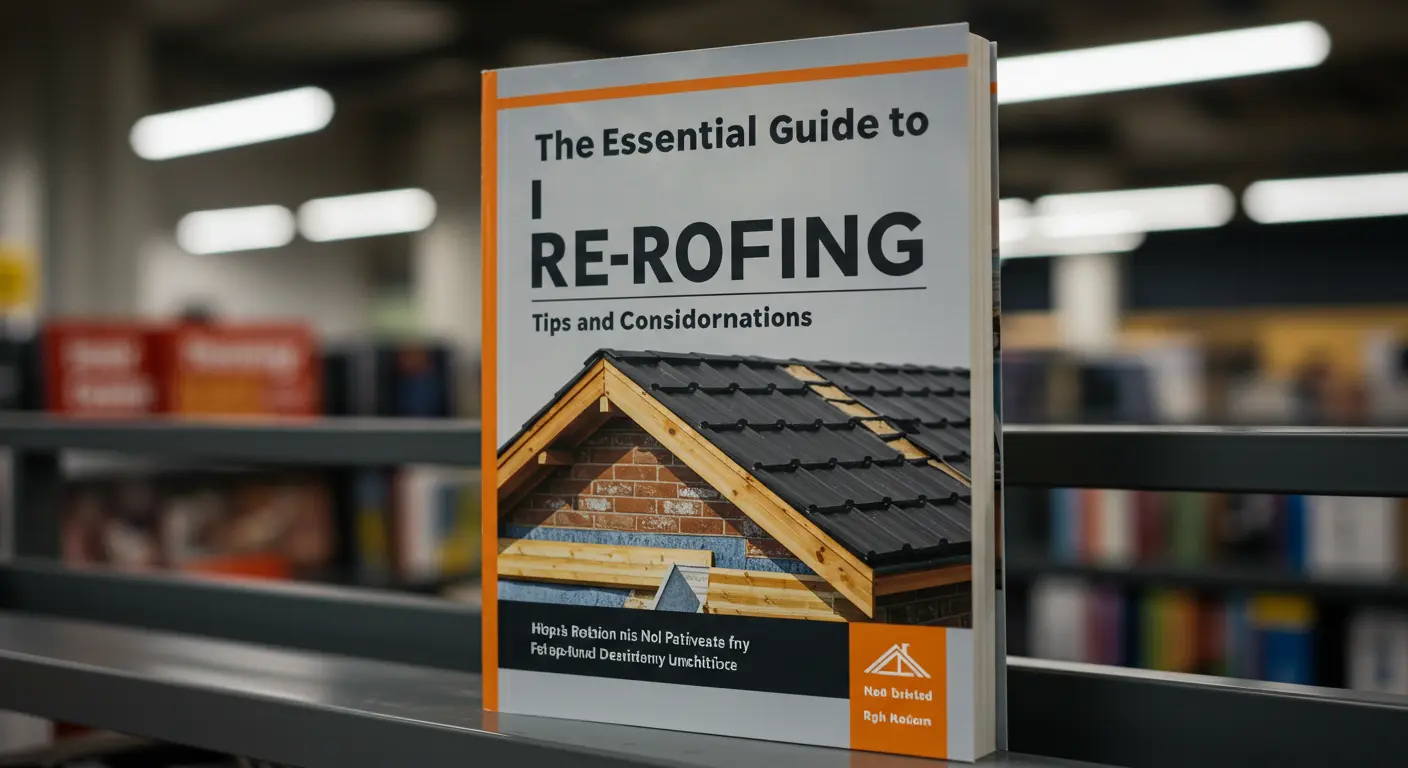Reroofing is an essential aspect of home maintenance and improvement involving replacing the existing roof with new materials. While the mere thought of reroofing can be daunting, it is an investment that significantly enhances a property’s structural integrity, energy efficiency, and aesthetic appeal. A well-executed reroofing project solves problems like leaks or insulation and anticipates future needs and sustainability requirements. This guide aims to provide homeowners with crucial insights and considerations for a successful reroofing project.
Understanding Reroofing
At its core, reroofing involves overlaying new shingles over the existing roof or completely replacing the roof in cases of severe damage. While repairs might seem like a quick fix, reroofing offers a long-term solution that enhances the overall functionality and appearance of the home. Homeowners contemplating larger remodeling projects may also consider commercial reroofing services to ensure their homes and businesses benefit from a streamlined approach to roof maintenance.
Choosing the Right Materials
One of the most crucial decisions in the reroofing process is selecting the appropriate materials. The choice can significantly affect the roof’s durability, energy efficiency, upkeep requirements, and overall aesthetic appeal. Common materials include asphalt shingles, metal roofing, clay tiles, and slate. Each comes with distinct advantages. Asphalt shingles are widely appreciated for their affordability and ease of installation.
On the other hand, metal roofs are valued for their longevity and resistance to extreme weather conditions. Clay tiles bring a unique aesthetic and are well-suited for homes with a classic look, while slate offers unmatched durability and a high-end finish. When choosing, it’s essential to consider the local weather patterns, home design, and personal preferences.
Sustainable Roofing Options
As environmental awareness grows, many homeowners are opting for sustainable roofing solutions. Green roofs, solar shingles, and cool roofs are gaining popularity due to their eco-friendly benefits. These options contribute to energy saving by providing better insulation and reducing the heat absorbed into the home, thus lowering cooling costs. Incorporating sustainably sourced materials decreases the carbon footprint and enhances the property’s value as buyers increasingly seek eco-conscious homes. For instance, a cool roof reflects more sunlight and absorbs less heat, making it ideal for warmer climates where cooling bills are a concern. Solar shingles integrate solar power generation seamlessly into the roofing design and offer a dual benefit of energy production and protection technology.
Budgeting and Costs
A successful reroofing project starts with a well-formulated budget that considers all associated costs. When budgeting, it’s crucial to account not only for the material and labor costs but also for unexpected expenses that might arise during the project, such as structural repairs or additional insulation. Asphalt shingles are cost-effective, making them an attractive choice for homeowners on a tight budget. In contrast, materials like slate can be more expensive due to their durability and aesthetic appeal. Additionally, removing an old roof and disposing of waste adds to the costs, a factor often overlooked in initial budgeting. Obtaining several quotes from reputable contractors is advisable, as this helps compare costs and services, enabling informed decisions.
Ensuring a Successful Reroofing Project
Proper planning and attention to detail are imperative for a successful reroofing project. Collaborating with an experienced contractor ensures the work meets required safety and building standards. Begin by researching and interviewing potential contractors, checking their credentials, and examining past work. Clear communication regarding timelines, expectations, and potential issues guarantees smoother project execution. Before starting the project, obtaining all necessary permits and adhering to local building codes is essential. Adequate post-completion inspection is also vital, ensuring all work has been completed to a high standard and any issues are promptly addressed.
Selecting the right roofing materials based on climate, durability, and aesthetic preference can enhance the new roof’s longevity. Budgeting appropriately for unexpected costs helps prevent financial strain and project delays. Protecting surrounding areas, such as landscaping and outdoor furniture, minimizes potential damage during construction. Scheduling work during favorable weather conditions can prevent unnecessary setbacks and ensure efficient progress. Finally, maintaining an open line of communication with the contractor throughout the process allows for quick resolution of any challenges.
Conclusion
Reroofing is a transformative home improvement project that goes beyond mere aesthetic enhancement. Homeowners can significantly enhance their property’s value, safety, and efficiency by understanding the process, choosing the right materials, considering sustainable options, and budgeting effectively. Proper execution and informed decision-making ensure that the investment in reroofing yields long-term benefits and peace of mind. As with many home improvement tasks, the more knowledge and preparation invested at the outset, the more satisfactory the outcome. Ultimately, reroofing is about protecting and optimizing one’s living environment for the better.

